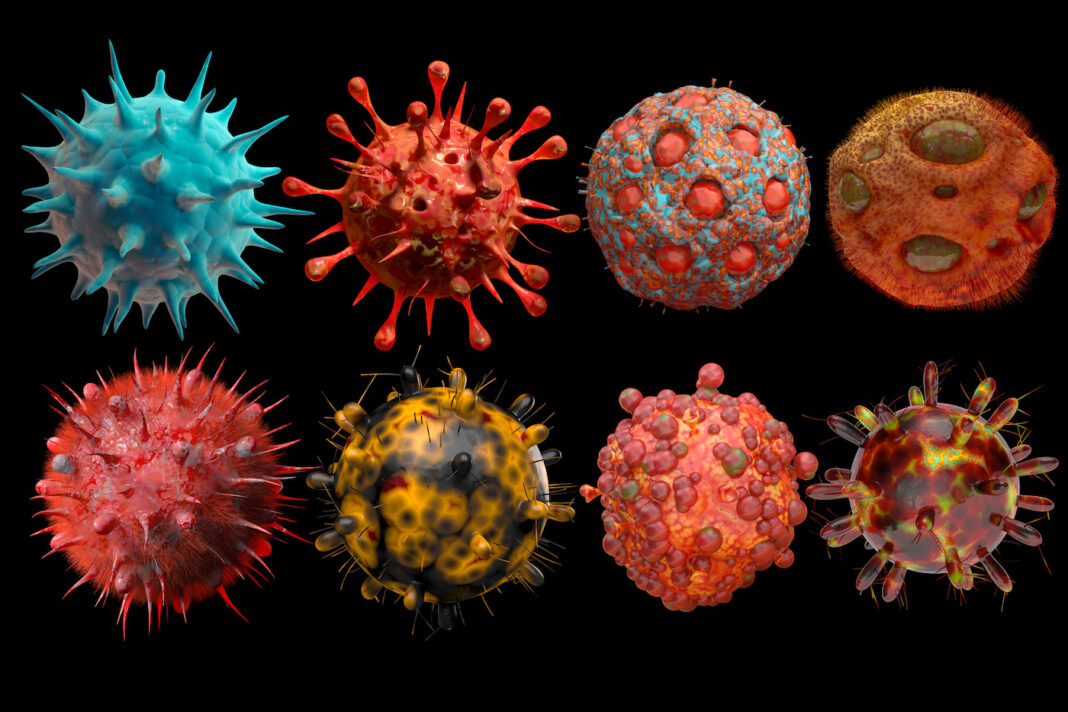By Jonathan D. Grinstein, PhD
With just a room-temperature “pot,” a sprinkling of molecules, and a simple electrical device, pathogen DNA detection can now be achieved in under an hour anywhere. This method creates concatemers—long DNA molecules that contain multiple copies of the same DNA sequence linked in series—that fold onto themselves to produce micrometer-sized balls of DNA from target viral or bacterial nucleic acids. These so-called “DNA nanoballs” are the size of certain bacteria and are detectable by a microscope and electrical impedance. Published in Science Advances, this research sets the foundation for developing electrically-based devices for detecting specific targets at the point-of-care setting.
“Together with our collaborators in Karolinska, Stanford, and Yale, we came up with an electronic method for detecting really low concentrations of viral mRNA, so viruses can be detected when there are less than ten copies in a nasal swab sample,” said Rutgers professor and co-senior author Mehdi Javanmard, PhD. “Our method involves taking the viral nucleic acid material and rolling it up into a ball of DNA large enough to be detected by an electronic cytometer. As a result, we can flag the infection at its earliest stages when the concentrations are still very low.”
A LAMP in the darkness
Since the beginning of the COVID-19 pandemic, many researchers have joined in developing methods to create scalable detection methods for SARS-CoV-2. As of today, 770,437,327 confirmed cases of COVID-19, including 6,956,900 deaths, have been reported to the World Health Organization (WHO).
“One of the things that could have prevented the spread of the virus was low-cost diagnostics that could flag patients when pre-symptomatic,” Javanmard told GEN. “Ultimately, billions of tests were produced, but all worked accurately only after the patient showed symptoms. For example, many big events required a negative COVID-19 test, but in reality, this was not so meaningful because often folks were infected but just pre-symptomatic. To detect viruses when infected people are pre-symptomatic, you need tests that are more sensitive and can catch the infection at early stages when viral concentrations are really low.”
According to co-senior author Lars M. Steinmetz, PhD, Stanford professor and co-director of the Stanford Genome Technology Center, their approach was inspired by developing a device to detect pathogens with an at-home test using easily accessible bodily fluids, such as saliva. They chose nucleic acid testing because PCR-based tests achieve much higher sensitivity than antigen tests, but they tend to be cumbersome and require a large device for temperature cycling. To do so, they turned to a technology called loop-mediated isothermal amplification (LAMP).
Steinmetz told GEN, “We wanted a standalone device that operates at a single temperature; therefore, the LAMP reaction was the obvious choice because it’s an isothermal amplification reaction that can be coupled easily into a portable device where you just use gravity flow essentially to drive liquids from one chamber where the LAMP reaction would occur to a detection chamber where the impedance sensing happens.”
The test is easy: it requires minimal starting material and oligos to make amplicons to form concatemers that become linked.
“One of the advantages is that we can do all the things at the same time, meaning we don’t need to do any specific reactions,” said co-senior author Vincent Pelechano, PhD, an associate professor at the Karolinska Institutet’s SciLifeLab.
Since LAMP produces massive amounts of DNA and cytometers can take up particles, cells, or beads, Pelechano said that they tested whether they could turn DNA into balls detectable by cytometers.
“It’s very simple,” said Pelechano. “We just add a couple of oligos during the LAMP reaction, and all these DNA products assemble in balls that we can directly detect with an electrical spike.”
Javanmard said that this is where MEMS (microelectromechanical systems)—the technology of microscopic devices incorporating both electronic and moving parts—and Lab on a Chip tech can play a big role. These technologies are a key part of making the tests faster and cheaper and have lower detection limits to catch the virus at low levels when folks are asymptomatic.
“We discovered a way to make these technologies portable and wearable and electronically plugged into the information world [to] build real threat tracking systems,” said Javanmard. “This way, viral pandemics can potentially be mitigated.”
According to Pelechano, another advantage of this system is that the electronics are far ahead regarding miniaturization and scalability. And it’s very, very cheap. By combining the two technologies—DNA nanoballs and electrical detection—Pelechano said that they developed an uncomplicated way to quantify nucleic acids.
As a proof-of-concept, the researchers decided to go after viruses, and, in the paper, they show that this system can detect SARS-CoV-2 and HIV with remarkable sensitivity.
“Every single DNA nanoball that we detect corresponds to one LAMP reaction that has occurred,” said Steinmetz. “We show that the number of DNA nanoballs we detect correlates with the concentration of the pathogenic material in the solution, with the sensitivity down to 10 copies, so it’s very inexpensive. The whole thing can be done in a device that’s less than $5 in total cost. So, it would provide a cheap and sensitive method for at-home testing of pathogens.”
Pelechano likens this nucleic acid amplification and systematic approach to DNA origami, the nanoscale folding of DNA to create arbitrary two- and three-dimensional shapes. The researchers aren’t certain why the DNA nanoballs form instead of other shapes, but they postulate that the path of least resistance is likely involved. Pelechano said that once a DNA ball starts to form, the DNA continues to fold onto itself, much like oil droplets in water, but that they haven’t done the calculations to prove it.
Paving the road for commercializing DNA nanoballs
The authors say that the technology they have developed will not just stay in the lab as they intend to commercialize it. They already have a Patent Cooperation Treaty (PCT), which assists applicants in seeking patent protection internationally for their inventions. Pelechano said, “We need to patent this if we want the general public to use it. Otherwise, it would be impossible to attract private interest.”
Since the test doesn’t need good antibodies, it can quickly adapt to an emerging outbreak, whether from pathogens or food contamination. Pelechano said they could optimize their DNA nanoball-based technique within a week, which would take months to do with antibodies. The team is working to expand the system to detect other pathogens, including those from environmental samples.
“We are exploring academic and other funding options,” said Pelechano. “Nothing is complete at the moment, but we are very interested in partnering to bring this to the market. But there is still a long path. This is something that we’re growing.”
Pelechano said they will not stray too far from developing this simple application because they can, at most, multiplex a few genes—it is not a genome-wide approach. Nevertheless, he said a potential next step would be detecting biomarkers in a clinical setting.



